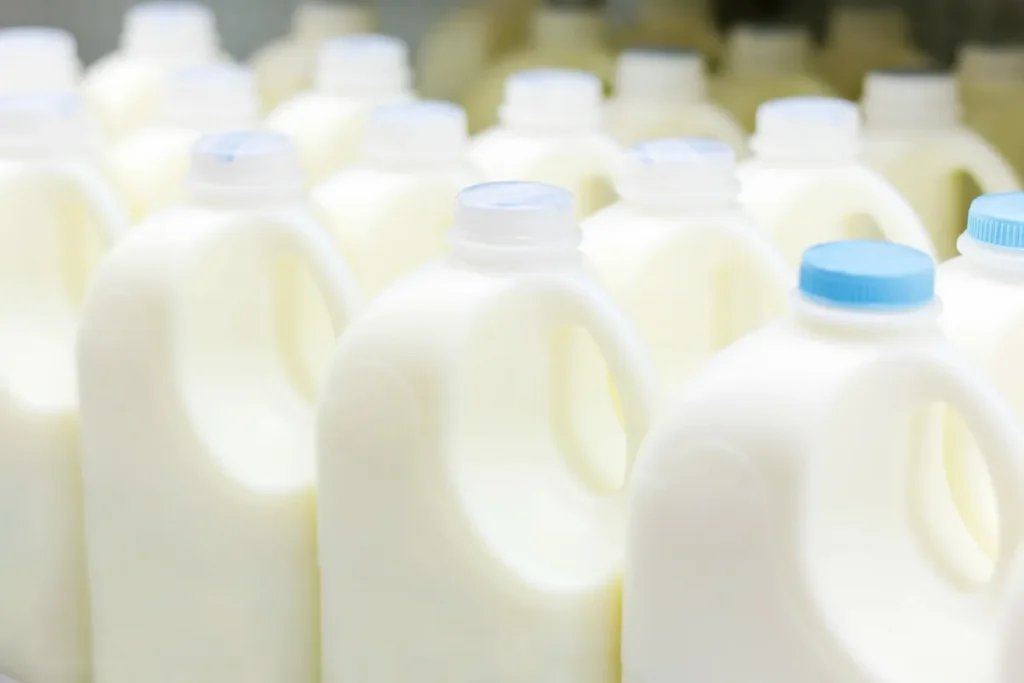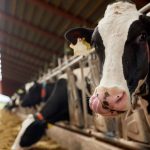
While damaged roads were the immediate crisis to overcome, flooded fields and stored silage are expected to be the greatest long-term disruption for most farmers.
E.B. Flory’s voice broke several times on Friday describing how exceptional dedication in different parts of the dairy supply chain kept milk losses to a minimum this week.
Despite catastrophic flooding and road damage across the state, most of what Vermont’s farmers and their herds produced made it to a processing facility, the dairy section chief at the Vermont Agency of Agriculture, Food & Markets said, even if it was not their usual one.
“Our cows, goats and sheep in the state, they don’t stop milking, and we have to get that milk, we have to get where it needs to be to be processed,” she said. “This has been a very stressful week, but we’ve had a lot of unexpected things come together that made things work in a successful way.”
The amount of milk that farmers and processors have had to dump was much less than everyone feared on Monday, agency Secretary Anson Tebbetts said during a press event on Friday. There also had been no reports of large-scale loss of livestock to flooding, he said.
Milk buyers within Vermont and in other states did not expect to see the volume of milk that arrived after news of the deluge and its aftermath had spread, Flory said. But from the farmers to the milk haulers to staff at processing plants and her own staff, many people worked around the clock to save the majority of the supply.
“We really only had a handful of instances where milk couldn’t get picked up because farms were inaccessible,” said Amber Sheridan, spokesperson for Cabot Creamery and the Agri-mark dairy cooperative. “It was really a small volume, given the magnitude of flooding.”
Flory and Sheridan gave milk hauling companies and their drivers a great deal of credit for that.
With main state routes blocked, it took much longer for haulers to drive their regular routes, and more trucks and drivers had to be brought in quickly. Haulers and their dispatchers, who Flory compared to air traffic controllers, worked long hours and communicated frequently about which routes were creating the greatest difficulties. Flory said she was able to communicate those locations directly to the Agency of Transportation, which put them onto the priority list.
For Agri-mark and Cabot, the biggest challenge was the closure of Route 2, which largely reopened Thursday afternoon, Sheridan said. When a truck could not reach the Cabot processing plant, the driver would be rerouted to Middlebury, or, when Interstate 89 closed on Monday, down to a plant in West Springfield, Massachusetts, so the milk cargo would not be wasted.
In the background, there were the new larger, more energy-efficient bulk tanks that many farmers across the state were able to buy as part of a federal grant through the Northeast Dairy Business Innovation Center, based at the state agency. Farms that had upgraded were able to keep milk cool between pickups for three days, rather than two.
“That was a really big deal,” Flory said. “They made a difference.”
An emergency waiver from the Food and Drug Administration allowed processors a bit more leeway in how long they could hold milk before dumping as well. Product testing still ensured consumer safety, she said.
Beyond that, it was all about the people.
“It’s been all hands on deck with many different sectors trying to get this done,” Flory said.
Haulers were incredibly dedicated, creatively trying to get to farms in whatever way possible, she said. “They had their own crises at home, you know. Their basements were flooded, and they were on the road getting the milk,” Flory said.
And it wasn’t just drivers. In the Northeast Kingdom, agency milk inspector Eric Perkins decided he would help them, going ahead in his car to the next farm to scout the best route to avoid backups and turnarounds. That initiative was so successful that the state’s other inspectors adopted the practice in the other corners of the state.
“He stepped up and did something really innovative that we’ve never done before, and it really worked,” Flory said.
Evaluating flooded crops and fields
While damaged roads were the immediate crisis to overcome, they are becoming more passable by the day. Now farmers are turning to evaluating flooded crops, hayfields and stored bales to determine how much damage the rains caused to what their livestock needs to eat.
“In our hilly state, some of our most fertile farmland lies in the river valleys,” Tebbetts said at the Friday morning event. Across Vermont, “countless fields of corn, hay, vegetables, fruit and pasture were swamped and buried,” he said.
Heather Darby, an agronomist with the University of Vermont Extension service, is visiting many of them. On Friday, she traveled from Swanton to Hardwick by car to lend her expert eye. She helped write two different informational sheets for farmers on flooded corn and flooded forage.
So far she has been pleased to see that most of the corn and soybean fields she has examined appear likely to recover. Unlike Tropical Storm Irene, which occurred in late summer, those crops are younger and should regrow and bounce back.
“Corn does have the ability to sort of stand itself back up, so it’s really a watch-and-see game for a lot of the fields right now,” Darby said.
Hayfields are another story. They are her biggest concern right now.
Most farmers had been waiting to take the second or third cut of this year’s hay until after the latest bout of rain. Where a field was flooded, that entire cutting is lost.
“They’ve got to chop it off and get it off the field so that those grasses can regrow,” Darby said.
If farmers want to try to save it, the crop should be stored separately from non-flooded silage and tested repeatedly for bacteria and toxins produced by fungus or mold.
At the farm she was headed to in Hardwick, flooded by the Lamoille River, even that may not be possible.
“The fields have so much debris on them, and there is so much silt on the fields, so we are not sure if the grass will die,” she said. She is going to try to advise the owners on whether they need to replant entirely.
For bales and other stored silage that got wet, the future is questionable. Some may be usable, but also need to be repeatedly tested. If hay was fully submerged for several days, it’s unlikely that it is safe for animals to eat, even if wrapped, Darby said.
Jane Clifford, who runs an eighth-generation dairy farm in Starksboro with her husband, said her farm was spared, but she has close friends in the region who had hundreds of active acres underwater.
While the losses are large, and dairy farming has unique challenges, farmers are aware they are just one of many small businesses who are reeling right now, she said.
“It’s frustrating. It’s hard. But for those of us in the industry, it’s a business,” Clifford said. “I look at all the businesses in downtown Montpelier or Barre that were impacted. I look at it that we are all kind of in the same boat.”

























